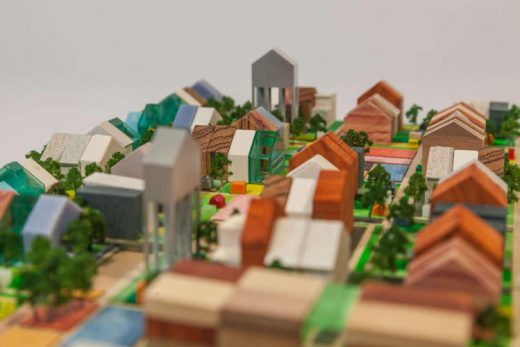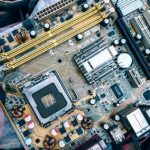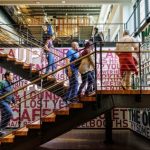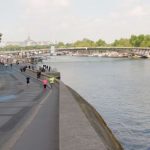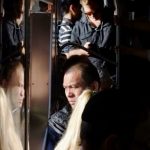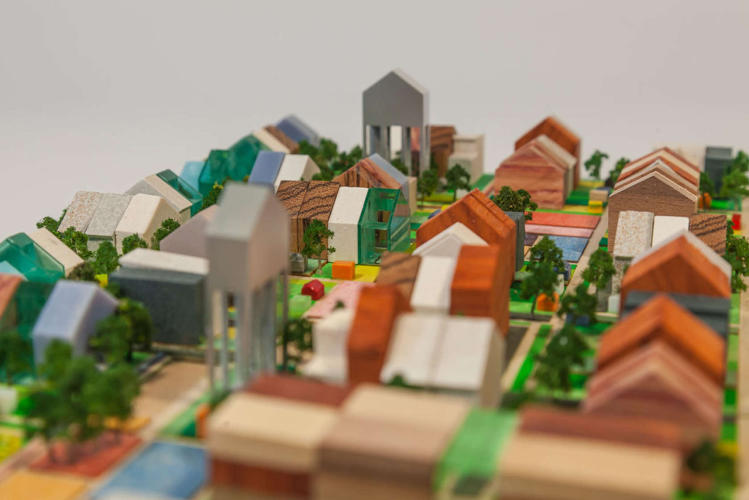This New Car-Free Neighborhood Redesigns Suburbia
It’s possible that some people might own a car in a new neighborhood designed for Mannheim, Germany. But they won’t be able to drive up to their doors: The entire neighborhood is car-free, with parking hidden underground.
Instead of roads, the neighborhood will have sidewalks that connect with paths in a surrounding park. “Essentially the project recreates the park experience on a residential scale, and removing the road allows the park to permeate throughout the site unrestricted,” says Johannes Pilz, one of the architects from the design firm MVRDV, which worked on the development for Traumhaus, a German affordable housing developer.
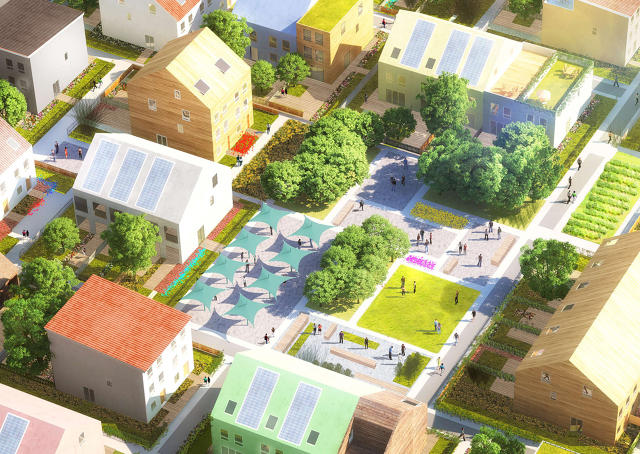
“By getting rid of the cars, you then open up the streets, whether it’s for children to come out and play with each other, or to encourage residents to sit outside their house, chat with one another, or go for a stroll,” he says. “By getting rid of the [pavement] barrier between households, you then increase interactions between neighbors, and the community then starts to bond.”
The neighborhood will also try to deliberately build diversity. Instead of the standard suburban pattern of long rows of single-family homes, the development will include a mix of different sized houses and apartments designed for young couples, students, the elderly, and families. Residents can pick the design that matches their needs; a new family might choose a house built on stilts with room to expand and build out the first floor if they later need the space.
Because the development will maintain a ratio of different housing types, it hopes to stay relatively diverse and avoid gentrification. The houses are also designed to be affordable to build. Like Traumhaus’s other developments, using standardized components makes mass production cheaper. MVRDV just tweaked those basic components to create a catalog of variations.

“To come up with different, more innovative variations of their designs doesn’t require any expensive modification, it just requires more in-depth thinking into how people live their everyday lives, and how their needs might be different from their neighbors,” says Pilz. “What we did was translate this thinking, combined with Traumhaus’s components, into a catalog of designs that can serve a whole community in a whole spectrum of different ways.”
Each resident can also choose a custom garden to go with their house. “The scheme itself is an extension of the surrounding park,” says Pilz. “Through the network of paths and gardens, the atmosphere of the park weaves its way through the neighborhood. Individualized gardens, each of them different and customized, will throw a vibrant mix of colors throughout the village.”
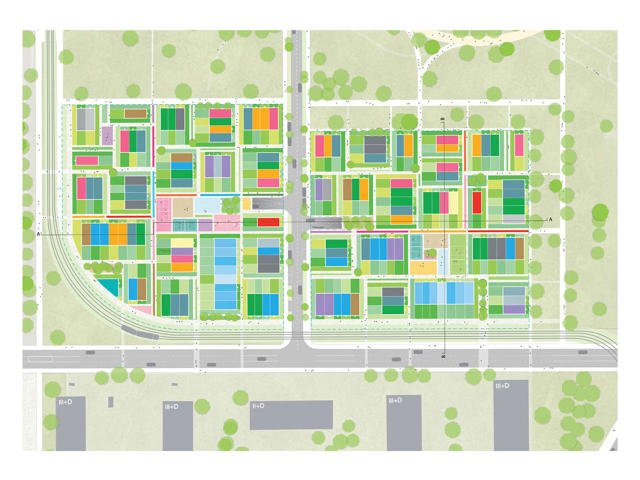
The neighborhood will be next to a tram stop, so residents won’t necessarily need to own a car at all, though the designers decided to give the option of underground parking. The design also allows emergency vehicles to drive into the neighborhood.
The designers think that the development, which will be built in a former U.S. Army barracks on the outskirts of Mannheim, can help change how people see the suburbs, and serve as a model for other communities. “Suburbs have become stale, isolated neighborhoods copy-and-pasted throughout the country,” he says. “The hope of our partnership with Traumhaus is that we might offer an alternative to the monotony of suburban living today, showing that there is an alternative to low-quality, expensive, and identical housing.”
All Images: courtesy MVRDV

Instead of the standard suburban pattern of long rows of single-family homes, the development will include a mix of houses of varying sizes.
” src=”http://c.fastcompany.net/multisite_files/fastcompany/imagecache/slideshow_large/slideshow/2016/04/3059264-slide-3-this-new-car-free-neighborhood-redesigns-suburbia.jpg”>
Because the development will maintain a ratio of different housing types, it hopes to stay relatively diverse and avoid gentrification.
” src=”http://a.fastcompany.net/multisite_files/fastcompany/imagecache/slideshow_large/slideshow/2016/04/3059264-slide-5-this-new-car-free-neighborhood-redesigns-suburbia.jpg”>
Each resident can also choose a custom garden to go with their house.
” src=”http://d.fastcompany.net/multisite_files/fastcompany/imagecache/slideshow_large/slideshow/2016/04/3059264-slide-8-this-new-car-free-neighborhood-redesigns-suburbia.jpg”>
Fast Company , Read Full Story (0)

